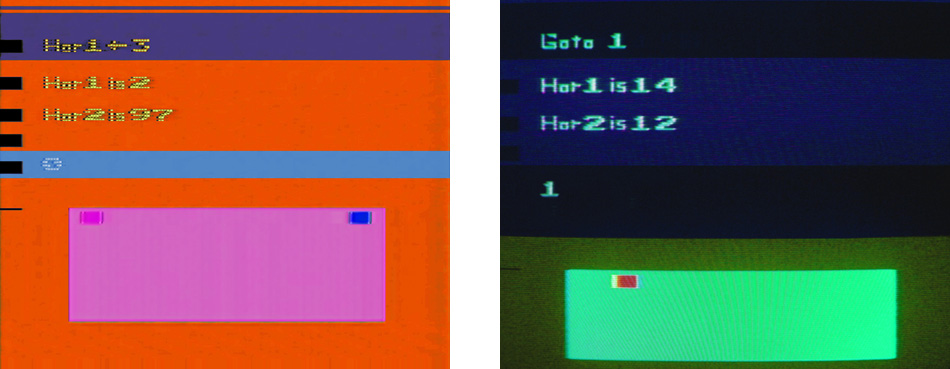
bin@ari, 1985
Atari 2600, custom cartridge, keyboard, TV screen
72” x 24” x 24”
bin@ari is a real-time video that generates binary messages. In this inceptive work made in 1985, Merhi explores the use of language, computer language, as the foundation of digital technologies.
The computerized video was programmed employing an Atari 2600. The screen is composed by 4 interlaced rows. On the first row the viewer can see the continous emergence of programming instructions. The second row contains the name and location of the 2 main characters, HOR1 and HOR2. The third row displays the endless encounters and non-encounters between HOR1 and HOR2. The meeting of both characters raises the appearance of the digit "1" (presence.) If they don't meet the digit "0" (absence) is automatically printed on the screen. Finally, all the data is compiled and visualized on the fourth row. The result is presented as 2 rectangles, HOR1 and HOR2, that randomly move on a large background rectangle.

After a few minutes of being turned on, the Atari enters a "sleeping mode". The dreams of the Atari are depicted by the constant change of colors of all the elements displayed on the TV screen. The resulting color patterns are similar to those being used by interior decorators, graphic and fashion designers. This is an interesting property if we consider that the CPU was made in 1977. Such inherent condition occurs as a result of the original hardware structure, keeping the screen active during the time the machine is on.
Collection: FMN / Galería de Arte Nacional, Caracas, Venezuela.